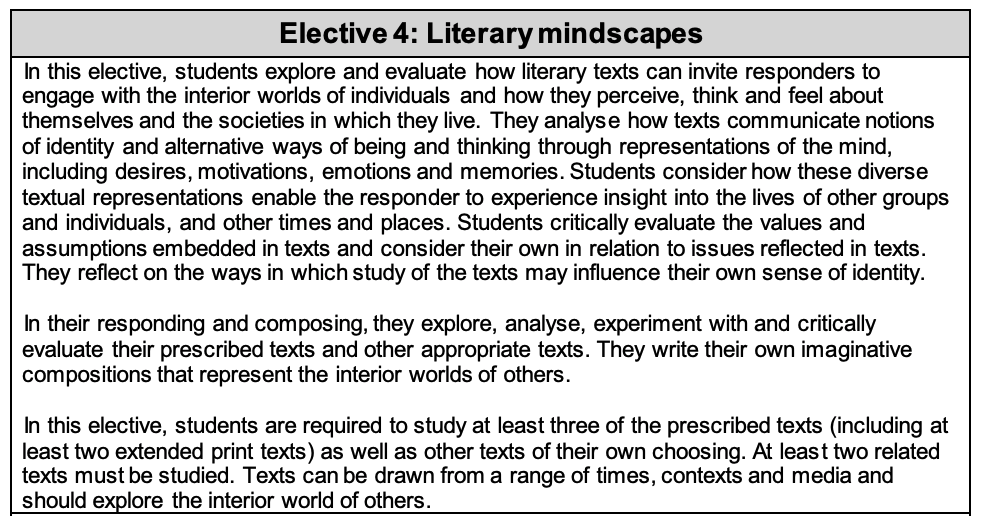Are you studying ‘I Felt A Funeral, in My Brain’ for English and finding it difficult to come up with your analysis?
Don’t fret! We’re going to walk you through the key ideas of ‘I Felt A Funeral, in My Brain’ as well as give you a step-by-step of how to analyse the text.
PLUS we’ll provide you with a sample analysis table (also called a TEE table) and a paragraph example for ‘I Felt A Funeral, in My Brain’.
It’s time to ace your analysis of ‘I Felt A Funeral, in My Brain’ — let’s dive in!
I Felt a Funeral, in My Brain by Emily Dickinson Summary
Context
Themes Explored in I Felt a Funeral, in My Brain by Emily Dickinson
Analysis of I Felt a Funeral, in My Brain by Emily Dickinson
Studying this Text for the HSC
Summary of I Felt a Funeral, in My Brain by Emily Dickinson
Dickinson imagines the speaker attending their own funeral in her poem ‘I Felt A Funeral, in My Brain’.
On a literal level, the speaker is in their casket, hearing the sounds of the funeral service and being lowered into the ground. On another level, the poem is one long and sensory sentence that explores the speaker’s mental breakdown.
In the first two stanzas, the speaker hears the ‘Mourners’ walking into the funeral, taking their seats and the wordless funeral service that is muffled from being inside the coffin. We are immediately within the speaker’s metaphor of this “spiritual” death brought upon by her spiralling mindset.
In lines 3 and 6, the repetition of words ‘treading’ and ‘beating’ becomes onomatopoeic to describe the physicality of her breakdown.
After the funeral service finishes in the third stanza, the speaker hears their coffin creaking as it is lifted. In the fourth stanza, the beating sounds of the ‘Boots of Lead’ become so overpowering that the space turns into nothing but a bell ringing. The speaker then describes the frightening image of being reduced to an ear, alone in their own silent mind.
The final stanza depicts the speaker being lowered into the ground, where they plummet down into nothing. When the ‘Plank in Reason’ breaks, the speaker loses their sanity and consciousness. The last line carries a sense of relief as the speaker is ‘Finished knowing’ and stops mid-sentence.
Context
Personal
Although Dickinson is one of the literary pioneers in American literature, Dickinson told her family to burn all her work instead of publishing it — so, we have to acknowledge the ethical dilemma of discussing somebody’s work who never wanted the recognition.
Dickinson was a recluse and did not leave her house for the last two decades of her life. She wrote nearly 1100 poems between the late 1850s to 1865.
In 1961 (scholars estimate), during the start of the Civil War literary period, Dickinson wrote ‘I felt a Funeral, in my Brain’.
Her poems often explore death and mortality and, though she dismissed organised faith, she often questioned the soul’s survival after death.
Emily Dickinson VS American Transcendentalism
Many of Dickinson’s contemporaries were Transcendentalist writers who valued the power of the inner mind, the meaning of the natural landscape and human significance. Think Henry David Thoureau who secluded himself in the woods, Emerson who said “America is a poem in our eyes” or Whitman who saw America as “the greatest poem”.
Dickinson experimented with her own way of expression and challenged the conventions of poetry in 1800s America. Dickinson often writes short poems and uses unusual capitalisations of words, punctuation and slant rhyme.
While Emerson and Whitman sought out to shape America’s national image, her unconventional poetic style is more private, sharply contrasting and challenging the Transcendentalist romantic vision through her grammar and language choice.
At the same time, her poems have a single speaker, they explore universal truths of the human condition — so, while Dickinson was heavily influenced by Transcendentalism, she wasn’t entirely tied to the school of thought.
Themes Explored in I Felt a Funeral, in My Brain
Madness and Trauma
The poem can be read as one long sentence about a mental breakdown. The cyclical tolling in the poem reminds us of the vicious internal setting of the speaker’s, perhaps recurrent, anxiety and their attempt to survive this mental attack.
Uncertainty and the Limits of Reason
Dickinson explores the futility of human reason and its inescapable limitations. Though the speaker tries to understand what is happening in their brain, it ultimately surrenders to the physical and corporeal sensations.
The speaker imagines escaping this uncertainty to an unknowable place, where the lines ‘some strange Race / Wrecked, solitary, here’ and ‘hit a World, at every plunge’ describes this new world.
Mortality and Death
Though she rejected organised religion and the idea of Heaven, Dickinson’s poetry often explored the theological idea of the soul after death. In the poem, there is a sense of loss as the churchgoing mass carries the speaker’s body — this death is also a way for Dickinson to explore the innate loneliness and isolation of humans, as well as an escape from it.
How to Analyse I Felt a Funeral, in My Brain in 3 Steps
Often students will try to start with their thesis when trying to answer an essay question. Instead, start with your analysis! You need to equip yourself with the knowledge of your text before you can answer anything about it.
After you’ve analysed your text, you can draw ideas from it, then you can build your thesis!
We’re going to walk you through creating an analysis for ‘I felt a Funeral, in my Brain’ in three simple steps!
Step 1: Choose your example
The best way to choose an example is to find a technique. The technique is the key to unlocking deeper meaning in a text, which you will need in your analysis.
We have chosen to look at lines 3 and 6 in ‘I felt a Funeral, in my Brain’.
Step 2: Identify your technique(s)
When trying to find a technique within your example, it’s not about finding the fanciest technique or just any old technique for that matter!
It’s about identifying a technique which will enable you to say something about your idea that’s interesting and can contribute to your argument and analysis.
Try to focus on finding examples with techniques which unveil a deeper meaning like metaphors, similes, figurative language, connotations, symbolism and recurring motifs. Other techniques like alliteration and repetition are a bit harder to find a deeper meaning in!
We have identified 5 techniques in the quote above: consonance, contrast, diction, enjambment and simile.
It’s always great to try and find multiple techniques in your quotes as it allows you to take your analysis up a notch!
Step 3: Write the analysis
When you write the analysis, it is important to always focus on what the effect of the technique is. One of the worst things you can do when writing analysis is technique labelling. Technique labelling would look like this:
The repetition of the words ‘treading – treading’ and ‘beating – beating’ reflect the onomatopoeic sound of the funeral, where the boots suggest the oppressive nature of the speaker’s breakdown.
Instead of this we need to flesh out how each of those techniques get us to our point. We should explore how the techniques actually describe the speaker’s experience of their mental breakdown and relate it back to the topic sentence:
In lines 3 and 6, the onomatopoeic repetition of the mourners ‘treading – treading’ and ‘beating – beating’ evokes the corporeality of the speaker’s mental breakdown, where the cyclical pain of the mourners’ boots is also an oppressive sensation.
Studying this Text for HSC Extension English
In the space below, we will show you how to connect a number of the syllabus points in Literary Mindscapes to assist with your analysis of ‘I felt a Funeral, in my Brain’. We have also included the Literary Mindscapes Rubric to refresh your memory!
Link #1: Interior worlds of individuals and how they perceive, think and feel about themselves and the societies in which they live
Dickinson richly describes the experience of a mental breakdown as something that occurs to an individual and is often inescapable. Like death and your own funeral, you can’t just leave your brain.
She sheds the trauma of feeling a spiralling mind in an empathetic way during a time where hysteria and mental illness was seen as monstrous and punishable, rather than something that can be helped with.
Link #2: Alternative ways of being and thinking through representations of the mind, including desires, motivations, emotions and memories
Dickinson’s theme of the limited irrational mind compels us to challenge the popular idea of human significance. In the third and fourth stanzas, Dickinson imagines a primal world where our minds are removed and the pursuit of knowledge – would it be better or worse for our individual emotions and motivations?
Need some help analysing other texts?
Check out other texts we’ve created guides for below:
- Wild Grapes
- ‘Red’ by Ted Hughes
- Così
- Like a House on Fire
- After Darkness
- King Lear
- The Truman Show
- Ransom
- Away by Michael Gow
- Frank Hurley: The Man Who Made History
- Mabo
- The Stranger
- A Midsummer Night’s Dream
- One Flew Over the Cuckoo’s Nest
- The Pedestrian
- Rainbow’s End
Are you looking for some extra help with your analysis of I Felt a Funeral, in My Brain by Emily Dickinson?
We have an incredible team of English tutors and mentors!
We can help you master your analysis of I Felt a Funeral, in My Brain by taking you through the summary, context and themes. We’ll also help you ace your upcoming English assessments with personalised lessons conducted one-on-one in your home or online!
We’ve supported over 8,000 students over the last 11 years, and on average our students score mark improvements of over 20%!
To find out more and get started with an inspirational tutor and mentor, get in touch today or give us a ring on 1300 267 888!
Lynn Chen is a Content Writer at Art of Smart Education and is a Communication student at UTS with a major in Creative Writing. Lynn’s articles have been published in Vertigo, The Comma, and Shut Up and Go. In her spare time, she also writes poetry.









